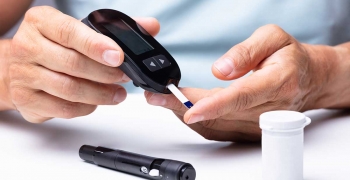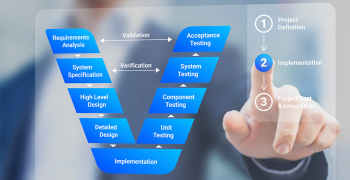In accordance with Section 745A(b) of the Federal Food, Drug, and Cosmetic (FD&C) Act, the USFDA has developed eSTAR—a streamlined electronic submission template aimed at simplifying the medical device submission process.
The Electronic Submission Template and Resource (eSTAR) program is a pivotal advancement in the regulatory landscape of medical device manufacturing. eSTAR is an interactive PDF form that guides applicants through the process of preparing a comprehensive medical device submission.
Historically, FDA's regulatory processes for medical devices were often seen as complex and time-intensive, posing challenges for manufacturers. The eSTAR program is a response to these challenges, with the primary goal of streamlining the submission process and enhancing efficiency in the medical device regulatory landscape.
eSTAR, is the electronic submission template designed to facilitate 510(k) electronic submissions. It consists of a targeted questionnaire with prompts linked with each question to enable the submitter to prepare an exhaustive e- submission. The program employs a robust technological infrastructure consisting of two main elements — the Electronic Submission Gateway (ESG) and the eSTAR Data Warehouse. These systems are seamlessly integrated with existing FDA systems databases which is in turn in sync with the CDRH reviewers’ internal Submission Memo And Review Template “SMART”. This ensures a smooth and efficient submission process.
The USFDA has released two different eSTAR PDF templates — one for medical devices and the other for in vitro diagnostic (IVD) devices.
Currently, FDA is exempting the following 510(k) submissions/information from the eSTAR program mandates:
- Interactive review responses
- Amendments
- Appeals/requests for supervisory review
- Substantive summary requests
- Change in correspondent amendments
- Amendments after final decision (i.e., add-to-files) and
- Withdrawal requests
The eSTAR program aims to streamline the regulatory submission process for medical device manufacturing. The primary objectives of the program include:
- Streamlining Regulatory Submissions
The program provides a standardized electronic template for submissions. This ensures that all submissions are organized in a consistent manner, making it easier for regulatory reviewers to navigate and assess the documentation. This also minimizes the chances of inaccurate or missing data , which are common issues in less structured processes.
- Accelerating approval timelines
With a structured format, companies can have a clearer understanding of what is expected in their submissions, reducing the likelihood of delays due to missing or incorrect information. This helps in organizing the required information more effectively, potentially leading to quicker review times by the FDA.
- Enhancing Collaboration Stakeholders
One of the innovative aspects of the eSTAR program is its facilitation of real-time communication and efficient queries and responses FDA and all stakeholders. The platform also enables more systematic feedback from FDA, helping companies understand the regulations and make necessary adjustments in a timely manner.
- Reducing Regulatory Burdens
eSTAR aims to reduce paperwork and simplify the documentation process, making it easier for companies to comply with regulatory requirements. The FDA guidance documents and other resources related to the eSTAR program, aids the companies in navigating through the regulatory landscape more efficiently.
- Eliminating the Need for Refuse to Accept (RTA) Review
The introduction of eSTAR facilitates a comprehensive data review that ensures that submissions are complete and correctly formatted which in turn eliminates the need for an RTA review. This accelerates the overall review process, as submissions can move directly to the substantive review stage.
- Enhancing Data Security and Integrity
eSTAR utilizes a secure electronic submission portal, ensuring that all sensitive information and data are protected against unauthorized access. The eSTAR template is designed to maintain the integrity of the data submitted, reducing the risks of data corruption or loss.
In order to fully understand the challenges, the MedTech industry must acknowledge that the eSTAR program primarily aims to expedite the FDA's procedures rather than those of the industry itself.
- The compliance process, prone to frequent changes, can impede submission timelines and subsequently delay market entry.
- These evolving requirements necessitate companies having a training budget for their regulatory personnel to stay informed.
- Frequent updates to the program can inflate compliance costs due to the need for alignment with new standards.
- Each system update may require adjustments to document formats, compounding the complexity.
- The technical limitation of Adobe Acrobat, which limits document editing to a single user at a time, increases the risk of errors, particularly when multiple teams contribute to one submission.
- Collectively, these issues heighten the risk of submission rejections.
- eSTAR v4.0
Only the functionality for pre-market approval (PMA) submissions were available
No Health Canada and FDA joint pilot study for a single eSTAR submission
Requirement for documentation of cybersecurity risk management and or plan
- eSTAR v5.0
Enabled the functionality for PMA voluntary submissions
Health Canada and FDA will conduct joint pilot study to test the use of a single eSTAR submitted to both regulatory bodies
Cybersecurity documents including risk management assessment and report, cybersecurity testing, and software BOM and many other documents are expected to be attached if the device has cybersecurity application
Based on the product under submission, FDA distribute the work to either CDRH (Centre for Device and Radiological Health) or CBER (Centre for Biologics Evaluation and Research). The stakeholders are required to create an account in CDRH Portal for all submissions to CDRH or in the Electronic Submission Gateway (ESG) for CBER to complete all submission processes.
While specific timelines can vary depending on the complexity of the submission, a general timeline can be outlined for understanding different stages of reviews involved.
- Technical Screening:
After the initial submission, it may take 1-2 weeks for FDA to complete the technical screening. If a device fails technical screening, FDA will notify the submitter via email on the incomplete information. The 510(k) will be on hold until a fresh submission is made. If the submission is not replaced within 180 days of notification, FDA will consider the 510(k) as withdrawn.
- Review Phase:
During this phase, FDA conducts a detailed review of the submission which includes assessing clinical data, product quality, and manufacturing processes to ensure compliance with safety and efficacy standards. This could take 6¬–12 months depending on the complexity of submission. Throughout the review phase, FDA may request for additional information. Prompt response by the stakeholder is crucial to keep the process moving.
- Decision Phase:
Final decision may take approximately 6-18 months after initial submission which can be an approval, conditional approval (requiring further data), or rejection.
- Post-Submission Activities
After approval, companies must conduct regular post-market surveillance of their products. This includes reporting any adverse effects and ensuring continued compliance with regulatory standards.
The eSTAR program signifies a substantial shift in the medical device regulatory environment. If MedTech manufacturers can leverage the opportunities presented by the program, they can enhance their efficiency and expedite market delivery of safe medical devices.
To explore how LTTS can assist in navigating regulatory waters, learn more about our comprehensive services.




